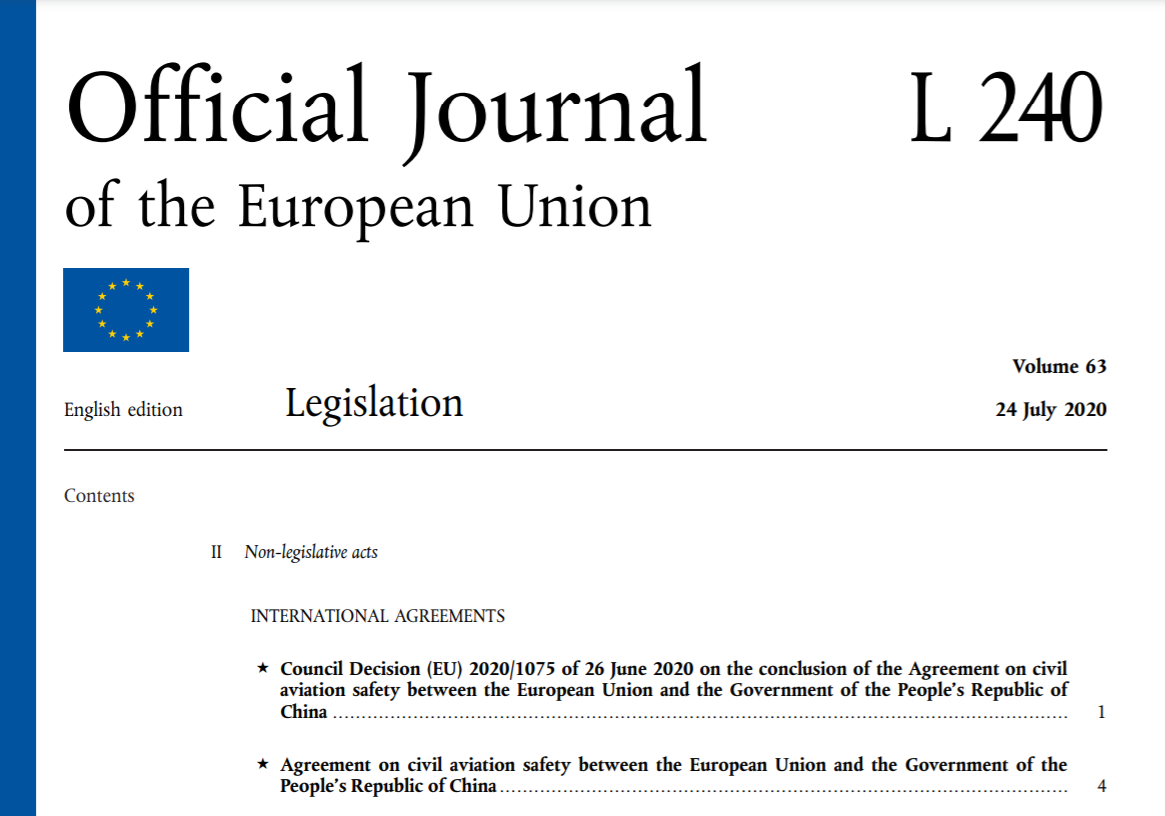
The scope of the agreement covers:
- airworthiness Certificates and Monitoring of Civil Aeronautical Products;
- environmental testing and Certificates of Civil Aeronautical Products;
- the certification and monitoring of design and production organisations;
- the certification and monitoring of maintenance organisations;
- personnel licensing and training; operation of aircraft;
- air traffic services and air traffic management;
- and other areas subject to Annexes to the Convention on International Civil Aviation, signed in Chicago on 7 December 1944 (“the Convention”).
This will, in theory, help Chinese autonomous air vehicle companies such as EHang develop products to joint EU/Chinese certification levels and enable European UTM service providers more easily access markets in China. As part of the agreement the two sides have set up a technical coordination body called the Certification Oversight Board (COB), which will contribute to minimising the differences in the regulatory systems, standards and certification processes of the Parties; developing, approving, and revising the Technical Implementation Procedures….sharing information on major safety concerns and, where appropriate, developing action plans to address them, along with other similar provisions. The first COB meeting took place on 3 September. According to a European Aviation Safety Agency (EASA) press release: “During the meeting, the parties adopted the Technical Implementation Procedures (TIP) which will support the BASA and its Annex on Airworthiness. These administrative and technical procedures describe in detail how EASA and CAAC will conduct the validation and reciprocal acceptance of civil aeronautical product approvals.”
“I am confident that, thanks to this bilateral agreement, the relations between Europe and China in aviation will be taken to the next level,” said EASA Executive Director Patrick Ky. “This further strengthens EASA’s commitment to work closely with international partners on building a safe and environmentally sustainable industry.”
The agreement goes beyond mutual recognition of certificates and suggests joint-agreements could be developed to certify systems and procedures. According to BASA:
“When mutually agreed by the applicant and both Technical Agents, a concurrent certification process may be used, where appropriate and as detailed in the Technical Implementation Procedures. Both Technical Agents recognise the possible benefits of such a process.”
For more information
https://www.easa.europa.eu/newsroom-and-events/press-releases/easa-and-chinas-caac-start-new-era-cooperation
https://eur-lex.europa.eu/legal-content/EN/TXT/PDF/?uri=OJ%3AL%3A2020%3A240%3AFULL&from=en

